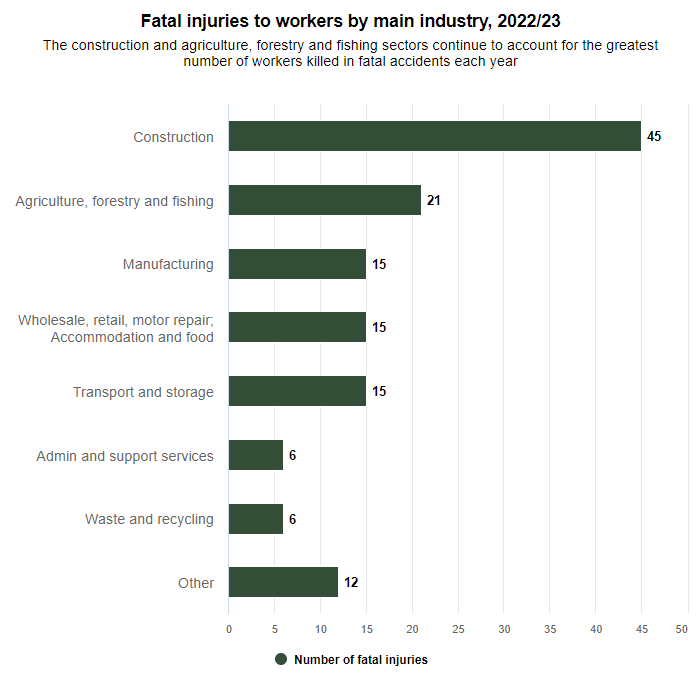In the realm of industrial and construction work, ensuring the safety of workers is paramount. From towering skyscrapers to expansive warehouses, many job sites require workers to operate at elevated heights, presenting inherent risks that demand robust safety measures. In 2022/23, HSE reported 135 deaths from work-related accidents. The construction and agriculture, forestry, and fishing sectors had the highest number of fatalities.

In this context, man up aerial platforms emerge as indispensable tools, providing secure working environments while enabling efficiency and productivity. Here we delve into how these platforms contribute to safety in various industries.
Enhanced Stability
Man up aerial platforms are engineered with stability at the forefront. Equipped with sturdy bases and advanced stabilisation mechanisms, these platforms offer a secure foundation for workers to execute tasks at elevated heights. Whether navigating uneven terrain or confronting adverse weather conditions, the stability of these platforms remain unwavering, minimising the risk of accidents caused by instability.
Heightened Accessibility
Accessibility to elevated work areas is often a logistical challenge in many industries. Man up aerial platforms address this challenge by providing safe and efficient access to elevated locations. Workers can ascend to desired heights swiftly and securely, eliminating the need for makeshift solutions that compromise safety. This enhanced accessibility not only streamlines operations but also reduces the likelihood of accidents associated with precarious climbing or makeshift scaffolding.
Versatility in Application
One of the hallmark features of man up aerial platforms is their versatility in application. Whether performing maintenance tasks on industrial machinery, conducting inspections on infrastructure, or executing construction work on high-rise buildings, these platforms adapt to diverse work environments with ease. This versatility ensures that workers have the right tool for the job, minimising the need for risky improvisation and maximising safety.
Integrated Safety Features
Modern man up aerial platforms are equipped with a myriad of safety features designed to mitigate risks and safeguard workers. From emergency descent systems and overload protection to anti-entrapment mechanisms and intuitive control interfaces, these platforms prioritise safety without compromising functionality. Furthermore, ongoing advancements in technology continue to enhance the safety capabilities of these platforms, ensuring that workers remain protected in dynamic work environments.
Compliance with Regulations
In the realm of workplace safety, regulatory compliance is non-negotiable. Man up aerial platforms adhere to stringent safety standards and regulations established by governing bodies to ensure the well-being of workers. By investing in compliant platforms, businesses demonstrate their commitment to prioritising safety and fostering a culture of responsibility in the workplace.
Training and Education
While man up aerial platforms offer unparalleled safety benefits, proper training and education are imperative to maximise their effectiveness. Operators must undergo comprehensive training programs to familiarise themselves with platform operation, safety protocols, and emergency procedures. By investing in training initiatives, businesses empower workers to operate platforms safely and confidently, mitigating the risk of accidents stemming from operator error.
In an period where workplace safety takes precedence, man up aerial platforms emerge as indispensable assets, ensuring secure working environments across various industries. With their enhanced stability, heightened accessibility, versatility in application, integrated safety features, compliance with regulations, and emphasis on training and education, these platforms uphold the highest standards of safety while facilitating productivity and efficiency. As industries continue to evolve, the role of man up aerial platforms in safeguarding workers and promoting workplace safety remains paramount.

